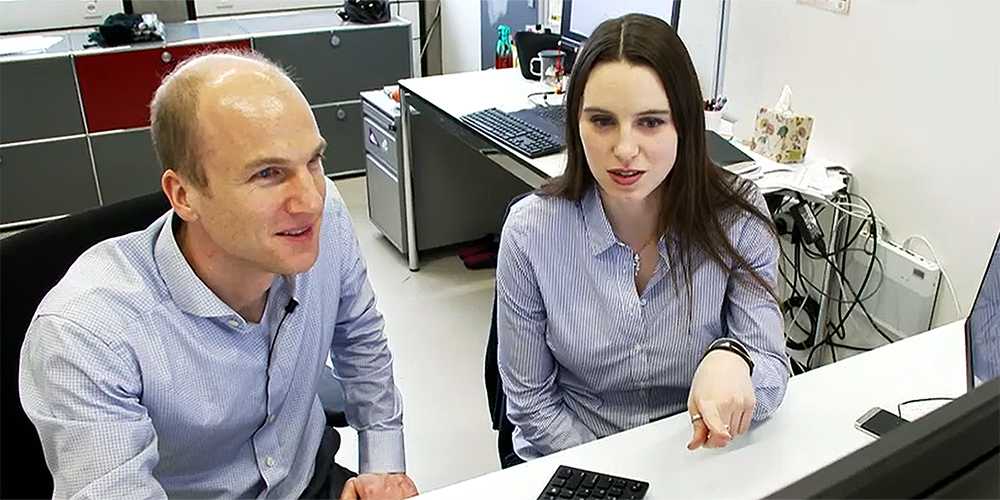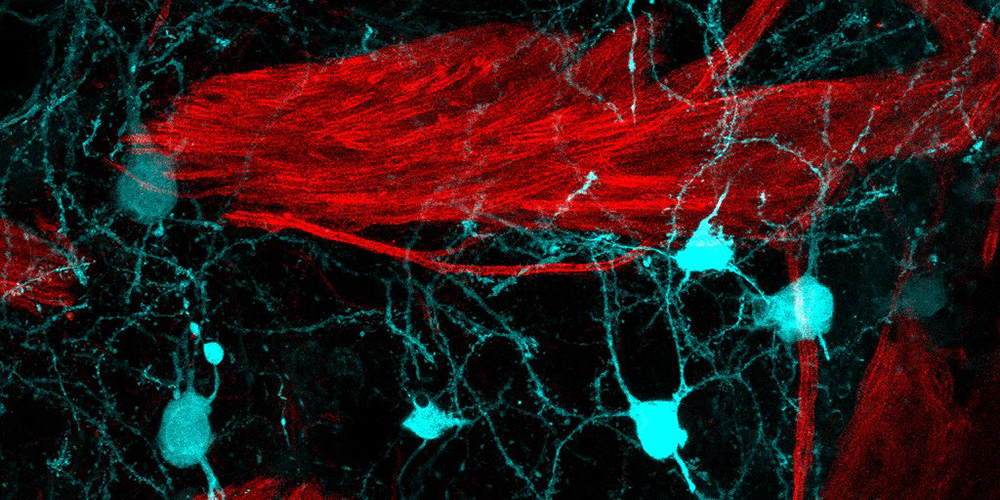Corona pandemic: Tracing the virus with Nextstrain
Labs and seminar rooms are empty, lectures are being held online. Even research has been reduced to the minimum. However, for Prof. Richard Neher from the University of Basel, these times are far from quiet. With his research on the global spread of the coronavirus, he is currently at the forefront of investigations into the pandemic.
20 March 2020
Richard Neher is a biophysicist and has been conducting research on epidemiological questions at the Biozentrum of the University of Basel since 2017. Yet never before has his opinion been so highly in demand as right now. Among scientists in Switzerland, he is one of the leading experts on the current pandemic. Managing the day-to-day flood of inquiries is a huge challenge. Diverse media and the authorities rely on him as a well-versed expert during these days dominated by the coronavirus.
Richard Neher’s colleague Emma Hodcroft, who as a postdoc carries out research with him, is also in high demand as a point of reference since the outbreak of the coronavirus crisis. From day to day more people follow her on Twitter. “Before the coronavirus outbreak, I had a few hundred followers,” says Emma Hodcroft. “Meanwhile the number has grown to over 12,000. It’s incredible.” She is one of the few women who has joined the panel of epidemiological experts.
Open Science
Richard Neher is an advocate of Open Science. His work on the spread of viruses, now that the coronavirus has the world in its grip, highlights the importance of making research results publicly accessible. He and his team depend on this: it is the only way that they can track the spread of the virus.
That Richard Neher is so highly sought-after today is also the result of an innovative idea that he and his colleague Trevor Bedford from the Fred Hutchinson Cancer Research Center in Seattle had some years ago. They wanted to be able to follow in real-time how a pathogen spreads and, to this end, developed the web application Nextstrain. The website has been online since 2015 and has already been used to address diverse epidemiological questions. However, a breakthrough only has come with the coronavirus crisis. In recent weeks the platform has been literally overrun, the website has been accessed over 400,000 times.
Nextstrain: Tracing viruses
Using Nextstrain, it is possible to trace in real time how the virus changes, that is, which mutations appear as it spreads. The smallest genetic changes provide information about the origin of the virus and the path it takes. As viruses are constantly mutating, due to the error-prone replication of their genetic material, they leave a trace that is easy to follow.
These mutations are the basis for tracing the spread of the virus. “We could clearly demonstrate this for Italy,” says Richard Neher. “In Italy, the coronavirus was introduced at least via two different routes.” Knowing the routes of infection helps to control epidemics and enables health authorities to take measures to curb the spread of a virus in time, as is currently done by declaring a state of emergency in the case of the coronavirus pandemic.
“The measures taken in Switzerland are also based on the Nextstrain analyses,” says Richard Neher. “When I look at how the virus has spread, the measures to contain the pandemic are fully justified. We must act now to slow down the virus spreading and to prevent our health system from becoming overburdened. Those who are weakened or have an underlying health condition would otherwise pay the price. It is a balancing act between the social and economic consequences.”
New tool: COVID-19 Scenarios
Richard Neher is currently working on a new tool COVID-19 Scenarios, which enables the exploration of different scenarios for the coronavirus outbreak. The analysis makes use of data such as the number of people who tested positive, the number of confirmed COVID-19 cases and recovered patients or the proportion of severe cases and deaths. They provide information as to whether the measures taken by the authorities are having the desired effect and slowing down the spread of the virus, or whether they should be tightened or could be relaxed. Furthermore, using this tool, it is possible to simulate the outbreak dynamics if corona virus transmission – similar to the flu – is varying with the seasons. With COVID-19 Scenarios, Richard Neher and his team have developed a novel planning tool for worldwide COVID-19 outbreaks.
Using Nextstrain to study the flu
Even though the coronavirus outbreak has been a real breakthrough for Nextstrain, the web application was in use already much earlier on. Nextstrain makes it possible to analyze the most diverse virus outbreaks, whether it is corona, influenza, dengue fever, Zika or Ebola. The range of applications is unlimited. Epidemiologists, virologists and health experts around the world employ this tool to get a real-time view into the evolution of viral pathogens. Health authorities also refer to the information provided on this platform.



